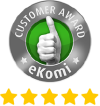
Giles Knights
Top Tips For Managing An Agile Software Development Team Remotely
The rise of remote and hybrid work arrangements has transformed how modern software development teams operate. With distributed DevOps and Scrum practices now the norm, effectively leading these geographically dispersed and virtual teams has become a critical skill for tech leaders.
Whether you’re a coach overseeing multiple distributed Scrum teams, or a hands-on engineering manager directing a team of international software development and cloud contractors, these top tips will help you get the most out of your remote Agile workforce.
Hiring the Right Agile Software Talent
Assembling a high-performing remote team starts with attracting the right candidates in the first place. Work closely with your HR and recruitment partners to craft job listings that appeal to experienced or entry-level Agile contractors and developers, depending on your needs.
Look for evidence that candidates can adopt the Agile methodology with confidence, rather than exclusively lean into their technical skills. If they display characteristics like strong asynchronous communication, self-discipline, and adaptability, you may find them a great fit for your Agile Development needs. See whether candidates can display evidence of conducting sufficient preparation, planning and sprints in line with the Agile development methodology.
Additionally, sell candidates on your company’s ethos of valuing individuals (however remote) and collaboration over processes and tools. While highlighting your productivity and enhancement tools and assets is important, be sure to commit to the four primary values of Agile software development:
- Individuals and interactions over processes and tools
- Working software over comprehensive documentation
- Customer collaboration over contract negotiation
- Responding to change by following a plan
Attracting the best remote Agile talent requires highlighting why your organisation is an employer of choice. Be sure to emphasise that your remote development teams can complete projects on time and within budget, with complete peace of mind and minimal risk.
Onboard and Integrate Effectively
Onboarding new remote contractors and full-time hires is crucial for setting them up for long-term success on your Agile software teams. Craft a comprehensive remote onboarding programme that familiarises them with your incumbent tech stack, workflows, CI/CD pipelines, and communication preferences.
Arrange virtual meet-and-greets with key stakeholders, provide self-serve training resources, and pair new team members with experienced line managers, supervisors, and ‘buddies’ to ease the transition. Proactively check in during the first few weeks to address any early challenges or roadblocks.
An effective way to ensure freelance Agile developers or contractors don’t feel left behind or ‘in the dark’ is to effectively eliminate the need for organisational hierarchy, particularly in those initial few months. Doing so will ensure they quickly feel part of your company culture, engaged, productive, and empowered to contribute.
Define Clear Goals and Metrics
Maintaining focus and accountability is essential when managing remote Agile software teams. Work with your reports to establish short- and long-term goals, KPIs, and milestones – then consistently track progress. Leverage in-house project management tools that allow you to visualise development sprints, roadmaps, and obstacles.
Furthermore, provide additional resources that may assist Agile workers in getting up to speed on areas that need improvement, or that they are uncertain about.
Emphasise what ‘done’ looks like for specific tickets, deployments, features, or tasks, to ensure that remote work can be done on time and to the expected standard. Continually refine and improve these processes.
Leverage Best-in-Class Tools
Agile software development thrives on the right tools and technology, and this is especially true for remote teams. Equip your distributed workforce with a robust, integrated tech stack using enterprise-grade solutions like Atlassian to streamline workflows and maximise productivity. Leverage cloud-based development apps, integrations, and plugins that facilitate remote developer workflows.
Provide guidance on tool usage and best practices to drive productivity and remove unnecessary barriers, where applicable. Regular training and feedback loops will keep remote Agile processes running smoothly.
Facilitate Regular Check-Ins
Frequent one-on-one and team check-ins are critical when managing a remote Agile software squad. Carve out dedicated time to discuss status updates, recognising their strengths and positive contributions, while delicately discussing weaknesses or improvement areas with open-ended dialogue.
Solicit feedback on what you can do as a manager to better support your remote workers, both in terms of project progress and employee wellbeing. Additionally, foster a culture of transparency by encouraging contributions in daily standups, sprint planning huddles, and team meetings.
Hire Agile Developers for Your Team
For many organisations, managing effective remote Agile software development remains a steep learning curve. Partnering with tech recruitment agencies like ClearHub can provide the Agile and DevOps expertise needed to accelerate your distributed team’s success.
ClearHub’s vast network of pre-qualified freelance Agile contractors, Scrum Masters, and DevOps consultants can rapidly supplement your in-house capabilities. Our dedicated recruiters vet candidates not just for their technical prowess, but also the soft skills essential for remote Agile collaboration. Whether you need an experienced Agile coach to upskill your permanent staff, or a Scrum Master to drive adoption across multiple distributed teams, ClearHub can match you with the right remote talent fit.
Start optimising your workforce today and get in touch with ClearHub to discuss how an Agile contractor can be the asset you need to take your organisation to the next level.



